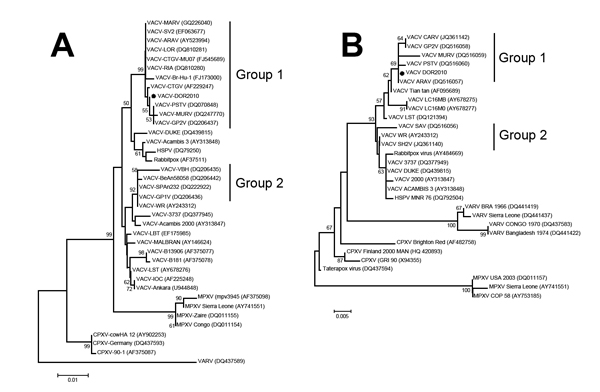Volume 21, Number 4—April 2015
Dispatch
Outbreak of Severe Zoonotic Vaccinia Virus Infection, Southeastern Brazil
Figure

Figure. Phylogenetic trees based on the nucleotide sequences of the A56R (A) and A26L (B) genes of orthopoxvirus showing that DOR clusters with Brazilian vaccinia virus(VACV) genogroup 1.The trees were constructed by using the neighbor-joining method and the Tamura-Nei model of nucleotide substitutions with a bootstrap of 1,000 replicates using MEGA 4.0 (http://www.megasoftware.net). Dots highlight VACV DOR2010 among group 1 isolates. GenBank accession numbers appear in parentheses. Scale bars indicate nucleotide substitutions per site.
Page created: March 17, 2015
Page updated: March 17, 2015
Page reviewed: March 17, 2015
The conclusions, findings, and opinions expressed by authors contributing to this journal do not necessarily reflect the official position of the U.S. Department of Health and Human Services, the Public Health Service, the Centers for Disease Control and Prevention, or the authors' affiliated institutions. Use of trade names is for identification only and does not imply endorsement by any of the groups named above.